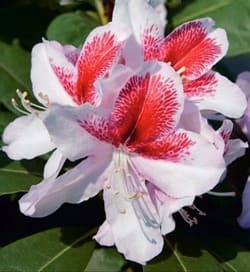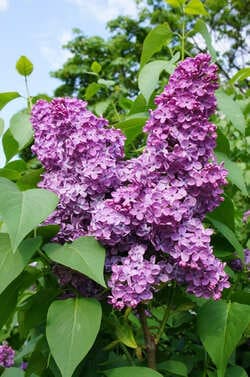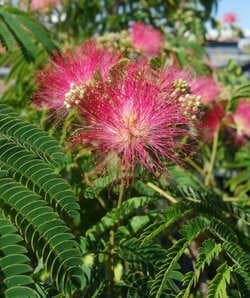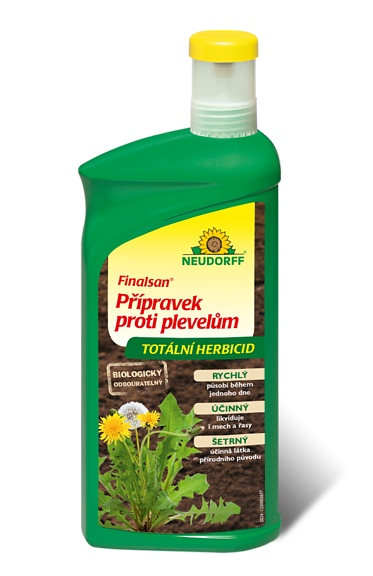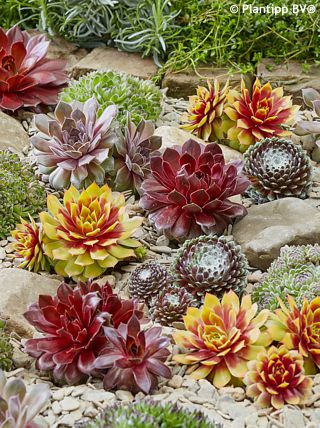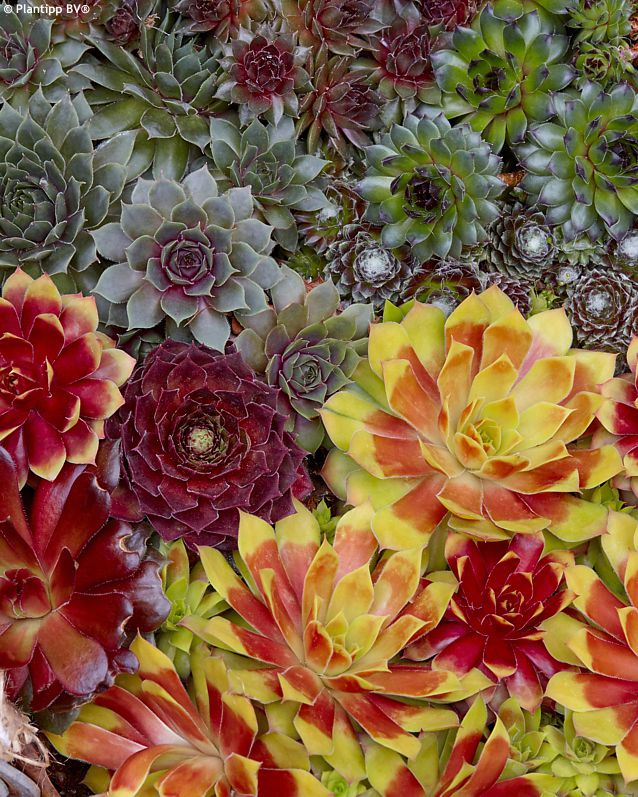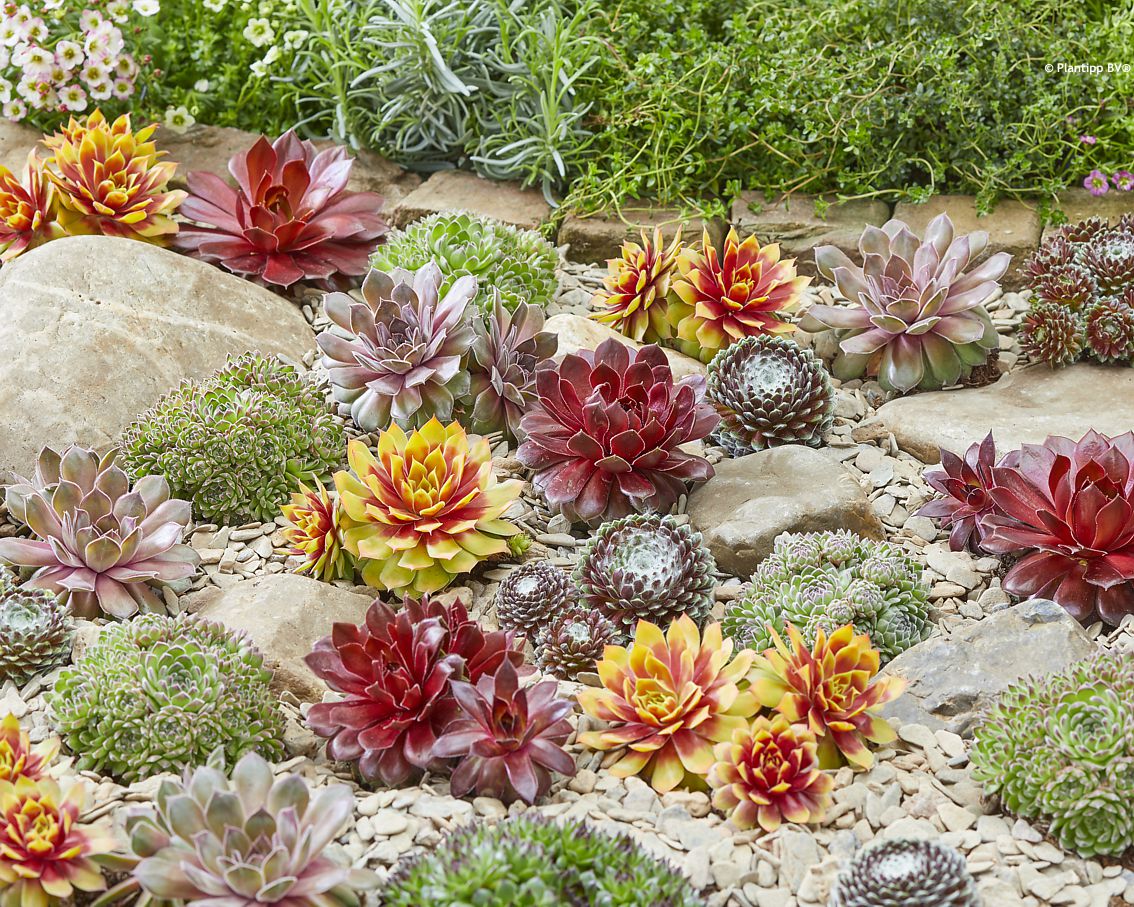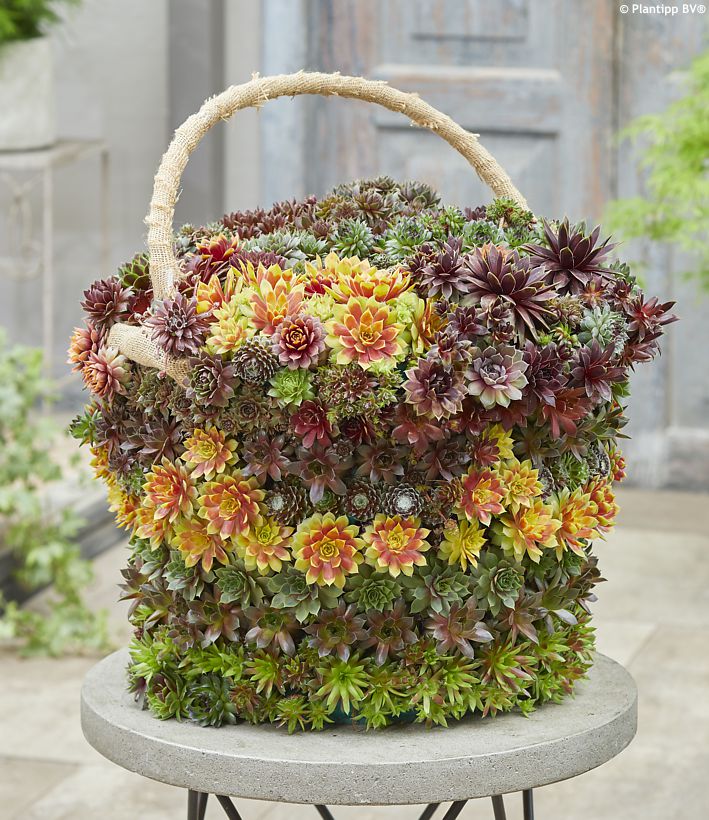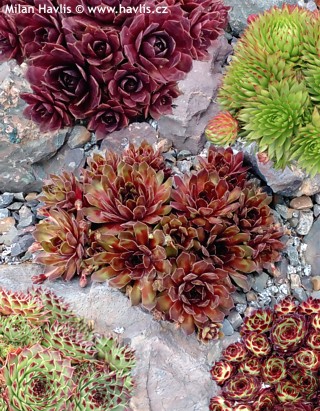Sempervivum CHICK CHARMS® houseleek, hens and chicks
Sempervivum
Houseleek, also known as hens and chickens, actually belongs to two genera – Sempervivum and Jovibarba. They are so similar that the horticultural trade does not generally differentiate between them, possibly because Sempervivum is an accepted synonym for Jovibarba. Houseleek originates from mountainous regions of Asia, Central Russia, and almost all of Europe. It is an evergreen, thick-leaved succulent with beautiful rosettes of colourful foliage. Several species, along with numerous varieties and hybrids, are known, many of which display a mix of green, silvery blue, deep red, pink, and burgundy tones. Multi-coloured forms are especially popular, as well as hairy types like S. arachnoideum, which dislike excessive winter moisture.
CHICK CHARMS® is a fascinating and beautiful series of hens and chickens
including the award-winning gem Gold Nugget from 2017 that was bred by Chris Hanson and which emerges golden orange and red and shines like a real star. But it would be unfair not to mention the others which are no less beautiful and offer various shades of red, green, and blue.
Each plant blooms a little differently. Most commonly, they develop upright, very thick flower stems, topped with star-shaped flowers in white, yellow, red, or purple. Flowering begins in mid-summer. Some low-growing, ground-covering types produce flowers just above their leaf rosettes, like stonecrops. The mother plant, once it has flowered, dies (its similarity to succulents like agave is no coincidence). However, before withering, it produces enough offshoots with young plants that continue to grow.
Houseleek is incredibly easy to grow. Simply plant it in gritty, well-draining soil under full sun, and it will thrive with minimal care. No special requirements. Fertilization is optional – use it if you want larger plants and faster spreading, but it is not necessary for healthy growth. Houseleek spreads gradually, producing small, spherical offshoots attached by thin, wiry stems. These dry out once the new plant touches the soil and has grown large enough to establish its own roots. Houseleek is typically very hardy, tolerating temperatures down to at least -34 °C (USDA Zone 4). However, some species and cultivars may be either more resilient or slightly less cold-tolerant than others.
Apart from specialist growers and collectors, the current trade practice among most European suppliers is to sell plants in mixed trays, often without variety names. To differentiate them here, we list them by colour, attaching a photograph of each plant so you can see exactly what we are selling. This way, you can place an order for the specific plant you want, based on the picture provided.
Last update 02-09-2020; 06-12-2021; 09-06-2025
Goods are shipped all over Europe. For Russia and U.K. and for further details please read about SHIPPING OPTIONS HERE.
Are you interested in a serious discount for orders NOV-FEB? Check your options here.
THE PRICES INCLUDE VAT of 15%. For quick conversion you can use 1 CZK = approx. 0.04 EUR
- STANDARD QUALITY - Plants of this group are 1st class quality with number of branches and overall density adequate to their size and age, considering they were container grown.
- DE LUXE QUALITY - This label guarantees a luxurious quality of manually selected plants that, compared to their height and age, are exceptionally dense and beautiful.
- EXTRA - These plants are usually mature and bigger specimens with exceptional overall appearance.
- STANDARD (as described in the plant form) means a tree with a trunk of 190-210 cm and a crown at the top, unless specified differently. The commercial size for trees is their girth measured in the height of 1m from ground.
- HOBBY - These plants are of the same quality as our standard-quality plants but younger and therefore cheaper.
- SHRUB - a woody plant with branches growing bushy from the ground level.
- HALF-STANDARD or MINI-STANDARD - a small tree with shorter trunk, its size is usually specified.
- FEATHERED - These are trees with branches growing already from the base of the trunk and up along the stem.
- GRASSES and PERENNIALS - Sizes given usually read the diameter of the pot or the clump, as specified.












